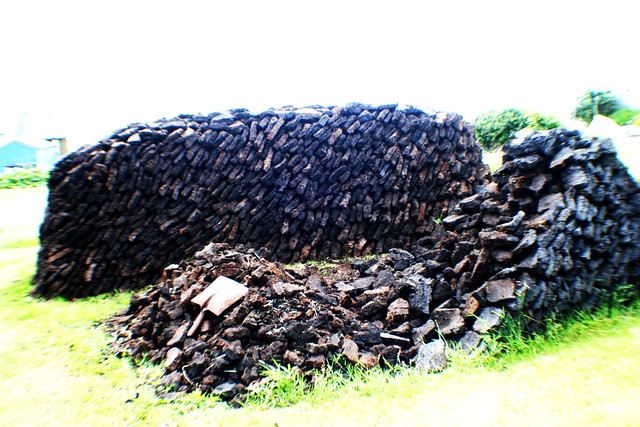Scottish peatlands at risk of destruction by climate change.
(Above image is a capture of a peat bog on the island of Islay.)
Today's press carries a summary of a report from Aberdeen University which concludes that much of Scotland's 1.8m hectares (7000 sq miles) of peatlands, a quarter of Scotland's land area, is vulnerable to elimination due to global warming.
Ironically, it is the writer's understanding the peat deposits were created as a function of climate change in another era, about 3000 years ago, when there occurred a subtle change in climate in that temperatures decreased slightly in tandem with an increase in rainfall. These developments led to the accretion of peat deposits which are comprised of decayed and decaying vegetation which reach depths of up to 8M/26 feet.
Peat cuttings in the Highlands
More information from the report:
- Peatlands store more than 2,500 million tonnes of carbon. Disappearance of the wetlands could result in about seven times Scotland's annual greenhouse gas release.
- The peatlands, which mainly comprise blanket bog, protect against erosion and provide an important wildlife habitat.
- Much of the nation's drinking water emanates from peatlands.
Peat cutting on Lewis, Western Isles.
Cut peat drying in the wind on Isle of Skye.
Scotland's principal export, whisky, is partly dependent on peat for malting and flavour. Whiskies from Islay, such as Ardbeg and Laphroaig, are renowned for 'peaty' flavours due to use of the fuel in the malting process.
Peatlands reserved for Laphroaig whisky on Islay
Stack of cut peat on Isle of Lewis
Acknowledgement: Most of the above information was sourced from a report in the Times newspaper.







Comments
Post a Comment